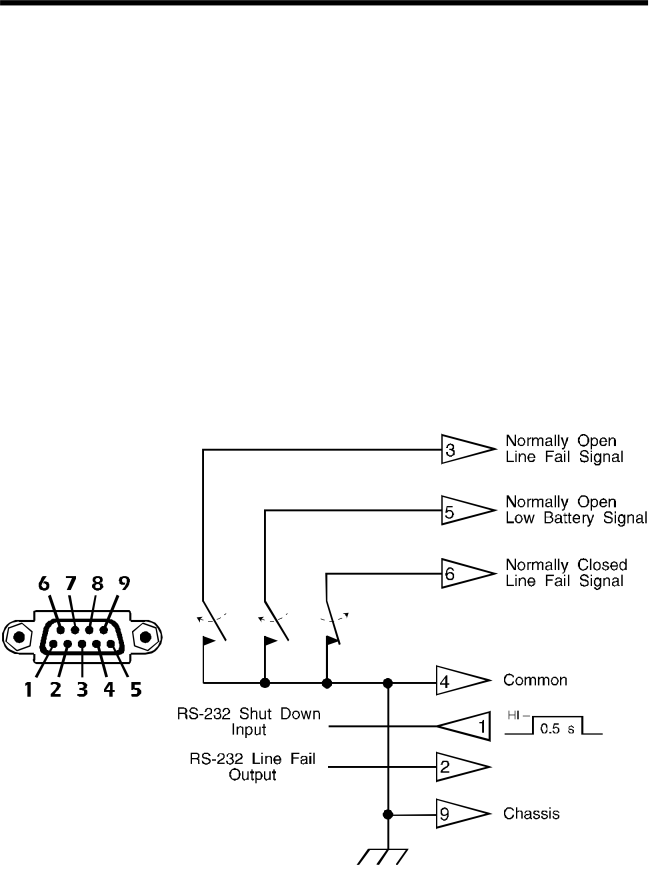
6.0 UPS monitoring
6.4 Computer interface port
The computer interface port is diagramed below for your reference. Those with technical abilities wishing to use this port in a special application should be aware of the following limitations and capabilities of the interface.
6.4.1Outputs at pins 3, 5 and 6 are actually open collector outputs which must be pulled up to a common referenced supply no greater than +40 Vdc. The transistors are capable of a maximum
6.4.2The output at Pin 2 will generate a LO to HI
6.4.3The UPS will shut down when a HI
Page20